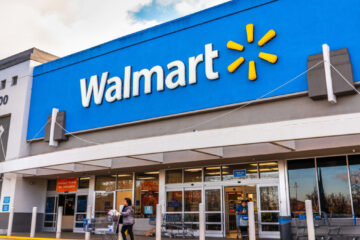The restaurant business has relatively low margins coupled with a limited ability to raise prices. Consumers don’t really care if an eatery sees its labor cost increase because of market conditions or if its rent increases because its lease has come up.
People only have so much tolerance for price variance. They may be willing to pay more for the same meal in an airport or some other place where prices tend to be higher, but they’re not going to tolerate that in most places.
Related: Forget McDonald’s, Walmart adds a new restaurant partner
In most cases, consumers have a vague idea of what a chain charges. Each location may have some wiggle room or the ability to charge more for drinks or dessert, but prices generally fall within a certain range.
That can lead to problems when the cost of operation rises. Labor has generally pushed higher in most markets, and rents have gone up in parts of the country. In many cases, those increases are passed onto consumers, but when a restaurant uses value as part of its marketing proposition, it can be challenging to absorb those increases.
💰💸 Don’t miss the move: SIGN UP for TheStreet’s FREE Daily newsletter 💰💸
Red Lobster and Hooters, for example, have closed hundreds of restaurants between the two chains where operating costs made a profit impossible. That’s happening to another popular restaurant chain, which is trying to be aggressive about getting ahead of the problem.
High rents were part of what drove Red Lobster to Chapter 11 bankruptcy.
Image source: Red Lobster
Red Robin is working on its “comeback”
Red Robin (RRGB) has not filed for Chapter 11 bankruptcy like some of its rivals, but it has been executing what company leaders call a “comeback” plan. No chain has to come back from really successful numbers, so it’s fair to say that the burger restaurant had some serious problems (including operating losses) that it needed to fix.
“Overall, we’re proud of the progress we’ve made in our comeback plan,” CEO G.J. Hart said during its fourth-quarter earnings call. “…While we’re pleased with the progress we’ve made under the North Star plan, we have two key priorities in 2025 to continue our comeback. First, further improve our traffic trends. Second, gain efficiency in our operations to deliver growth in restaurant and corporate level profitability.”
More closings:
Popular retail chain to close unprofitable store locationsBankrupt retail chain unloads store leases, key assetPopular discount retailer files bankruptcy, closes all stores
The CEO believes that leaning into its most loyal customers will help the brand grow.
“While our marketing team has made use of our new capabilities from day one, we believe we’re only scratching the surface. Our new program facilitates deeper guest segmentation and personalization, and we’re leveraging member exclusives, gamification, and compelling content campaigns to reap the full rewards of our program, driving new member growth and continuing our momentum in increasing guest frequency,” he added.
Red Robin is managing closures aggressively
Value is part of the Red Robin model and that caps its ability to raise prices. That means that some store locations are just not viable.
Hart talked about the chain’s aggressive plans to close locations where market conditions don’t allow it to make money.
“As we shared last quarter, while more than 300 of our company-owned restaurants continue to perform very well, we have approximately 70 restaurants that generate a restaurant-level operating loss of approximately $6 million in 2024,” he said.
That creates a cash burn for the company of roughly $9.5 million a year.
The chain plans to close those restaurants on a strategic basis.
Related: Popular burger chain taps McDonald’s exec to destroy rivals
“It is currently our base case expectation that we will close the majority of these restaurants over the next five years at their lease expiration,” Hart shared.
10 to 15 locations will be shut down this year.
“We believe the expected closure of a majority of these restaurants will allow the strength of our remaining portfolio to become clear over time and free cash that we expect to reinvest in the business and use to prepay debt. We’re also exploring other avenues to accelerate this process as we expect further updates on our progress in future quarters,” he added.


